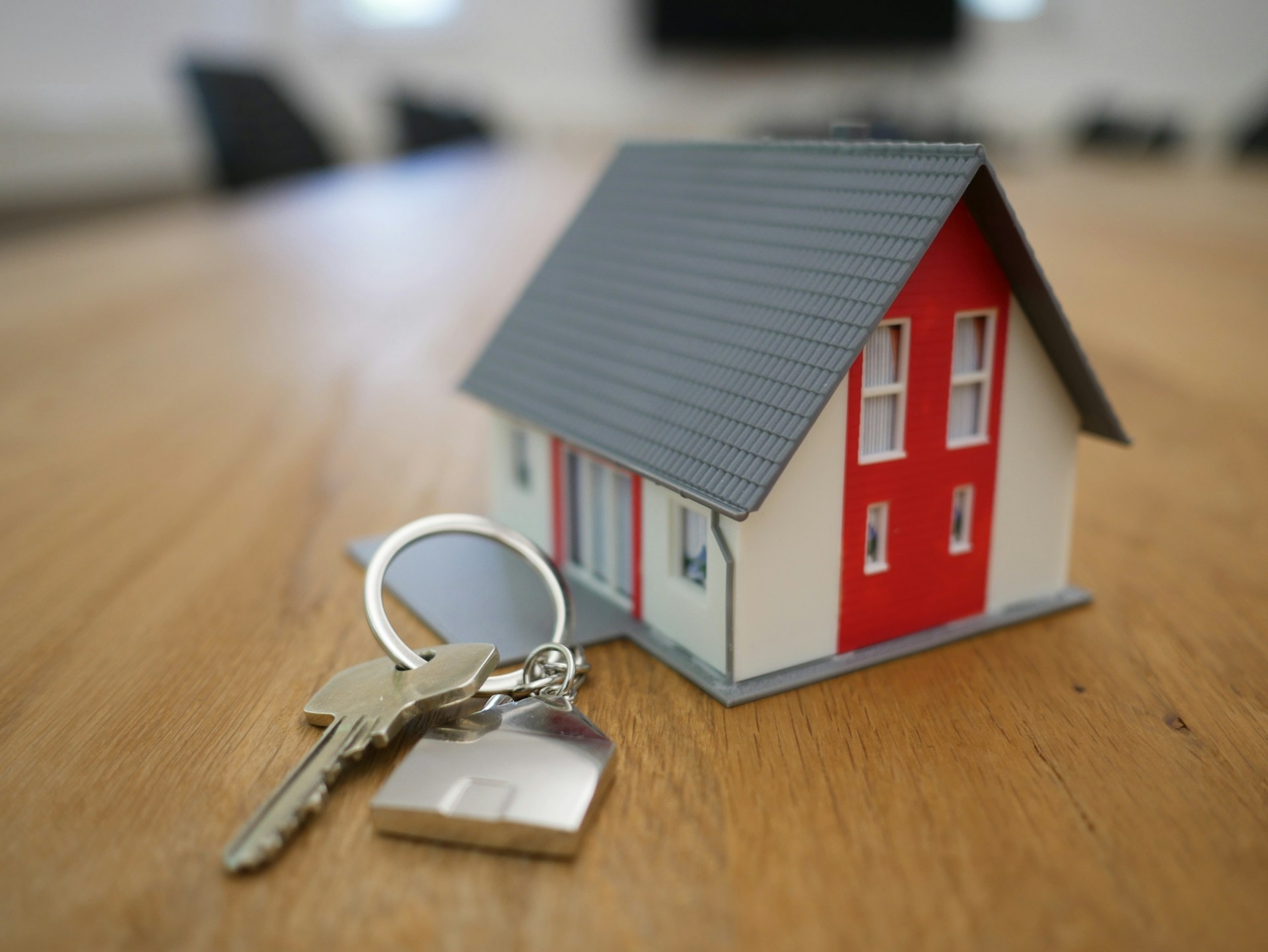Buying a home is one of the most exciting and rewarding milestones in a person’s life. Whether stepping into the real estate market for the first time or upgrading from your previous home, this journey offers wonderful opportunities for growth and new beginnings. This comprehensive real estate guide is designed to make the process straightforward and enjoyable, providing expert advice and practical tips to help first-time and second-time buyers confidently navigate the market, avoid common pitfalls, and make informed decisions that lead to lasting happiness in your new home.

Understanding Your Buyer Profile
First-Time Buyers
First-time homebuyers are generally younger and more budget-conscious, often facing a steeper learning curve in the real estate market. Many are motivated to stop renting, start building equity, or establish their families’ stability. However, they frequently encounter challenges such as limited savings, concerns about their credit history, and unfamiliarity with real estate terminology and processes.
According to the 2022 Annual Poverty Indicators Survey (APIS) published by the Philippine Statistics Authority (PSA) in 2023, three in every five families (62.1%) owned the house and lot they occupied, a number slowly rising as affordability programs become more accessible. These programs often offer incentives such as lower down payments, reduced interest rates, and assistance with closing costs, making the dream of homeownership more attainable for many. First-time buyers should also consider working closely with a real estate agent who specializes in helping new buyers navigate the complexities of the home-buying process. They can provide valuable insights into the local real estate buyer’s market, help identify potential properties, and guide buyers through negotiations and paperwork. Additionally, understanding mortgage options, which are designed to support first-time buyers with lower credit scores, can be beneficial.
Second-Time Buyers
Repeat buyers, on the other hand, have different goals. They might seek a larger home, a better location, or a long-term investment. Unlike first-timers, home movers may already have home equity, but face challenges like coordinating the sale of their current property or managing overlapping mortgage payments.
While often possessing greater confidence stemming from prior experience, second-time home buyers face the crucial task of reassessing their evolving financial landscape and shifting housing priorities. Unlike their first entry into the market, their current life stage often dictates different needs. For example, a family experiencing growth might now place a premium on properties offering additional square footage, multiple bedrooms, and proximity to reputable educational institutions. Conversely, individuals entering retirement may prioritize low-maintenance living environments, accessibility features, and perhaps a location closer to amenities and healthcare facilities, potentially opting for smaller homes or condo living. This reassessment is key to ensuring their next real estate venture aligns perfectly with their current and anticipated future circumstances.
Setting Realistic Financial Goals
Before you begin exploring listings, having a strong grasp of your financial readiness is essential. This foundation will help you set a realistic budget and make informed decisions throughout the process of buying a house.

Assessing Your Budget
Start with a comprehensive look at your income, debts, and expenses: A helpful guideline is the 28/36 rule.
- No more than 28% of your gross monthly income should go toward housing expenses.
- No more than 36% should go toward total debt payments.
Take control of your budget: Use a mortgage affordability calculator to estimate what you can afford without stretching your finances.
Boost your borrowing power: Proactively review your credit report and take steps to improve your score – a better credit rating translates to better interest rates.
Prepare for the unexpected: Build a financial safety net by setting aside funds for unforeseen costs and establishing a dedicated emergency savings account during your home-buying journey.
Costs to Consider
Don’t just focus on the sticker price. To truly understand the long-term commitment of homeownership, meticulously budget for additional expenses, including closing costs, ongoing property insurance, annual property taxes, and the inevitable costs of maintenance and repairs.
- Down Payment (typically 10%-20%)
- Closing Costs (2%-5% of purchase price)
- Home Insurance and Property Taxes
- HOA Fees (if applicable)
- Maintenance & Repairs (average of 1% of home value per year)
| Expense Category | Estimated Cost |
|---|---|
| Down Payment | PHP 500,000 – 1,000,000+ |
| Closing Costs | PHP 100,000 – 300,000 |
| Monthly Mortgage | PHP 15,000 – 50,000+ |
| Annual Maintenance | PHP 30,000 – 100,000 |
Loan Pre-Approval and Mortgage Options
Getting pre-approved signals to sellers that you’re serious and financially capable. This important step involves a thorough credit check and a detailed review of your financial documents, including income statements and bank accounts. Being pre-approved strengthens your position in negotiations, helps you understand the mortgage market, and determines a realistic budget for your property purchase.
Types of Mortgages:
In the Philippines, individuals looking to finance their home purchase have several types of mortgages available, primarily offered by banks and the government-backed Pag-IBIG Fund. The mortgage application process involves submitting necessary financial documents and meeting lender requirements to secure approval for these loan options. Here’s a breakdown of the common types:
1. Bank Financing (Conventional Loans):
Bank financing in the housing market refers to the loans banks issue to individuals or families to help them purchase residential properties. These conventional loans, commonly called mortgages, allow buyers to borrow a significant portion of the property’s purchase price, which they repay over time with interest.
- Fixed-Rate Mortgages: The interest rate remains the same for a specific period (usually 1 to 5 years, but can extend up to the entire loan term in some cases). This provides predictable monthly payments during the fixed period. After the fixed period, the rate usually reverts to a variable rate based on the bank’s prevailing rates. Example Providers: Many Philippine banks offer various fixed-rate terms (e.g., 1-year fix, 3-year fix, 5-year fix). For instance, BDO offers fixed-rate mortgages with rates that increase with the duration of the fixed term.
- Variable-Rate Mortgages: The interest rate fluctuates based on prevailing market conditions or a reference rate (e.g., the Bangko Sentral ng Pilipinas’ policy rate). This means your monthly payments can increase or decrease over the loan term. Example Providers: Most major banks in the Philippines offer variable-rate mortgages as an option, often as the default after a fixed-rate period expires.
- Specialized Home Loans: Some banks offer loans tailored for specific purposes:
- Construction Loans: These loans are designed to finance the building of a new house from the ground up, providing funds throughout the construction process. Example Providers: BPI (Eco-Build Financing), Metrobank (House Construction Loan), Security Bank (Home Loan Construction).
- Renovation Loans: Intended to support home improvements or repairs, these loans help homeowners enhance or maintain their properties. Example Providers: Security Bank (Home Improvement Loan | Home Renovation Loan), BPI (Housing Loan for Renovation), RCBC (Home Loan Plus).
- Solar Mortgages: Specialized loans that finance solar power systems installation, promoting energy efficiency and sustainability in your home. Example Providers: BPI, Security Bank (Solar Mortgage), BDO (funds solar panel installation).
- Home Equity Loans: Allow homeowners to borrow against the equity of an existing property, offering flexible financing options for various needs such as debt consolidation or home upgrades.
2. Government Housing Loans:
- PAG-IBIG Housing Loan: Offered by the Home Development Mutual Fund (HDMF), a government agency. It provides affordable housing loans with competitive interest rates and long repayment terms (up to 30 years), mostly beneficial for first-time homebuyers and low-to-middle-income earners. PAG-IBIG has two primary programs:
- Regular Housing Loan: Accessible to all active Pag-IBIG members who meet the required contribution criteria. Loan amounts can reach up to PHP 6 million, depending on the borrower’s repayment capacity and the property’s purchase price.
- Affordable Housing Loan Program: Designed for minimum-wage and low-income members, offering subsidized interest rates (as low as 3% per annum for loans up to PHP 580,000) for socialized housing projects. You can apply directly through their website or at their branches.
- Social Security System (SSS) House Repair and/or Improvement Loan: Provides loan facilities for qualified SSS members to finance major repairs.
- Land Bank of the Philippines (LANDBANK) Housing Loan: Offers various housing loan programs, including:
- Easy Home Loan: For purchasing or constructing a dream house, and refinancing existing home loans.
- Bahay para sa Bagong Bayani (3B): A special program for Overseas Filipino Workers (OFWs).
3. In-House Financing:
Offered directly by real estate developers, typically for pre-selling condominium units or subdivision lots. While the requirements might be less stringent than banks, interest rates can be higher, and loan terms are usually shorter (e.g., 5-10 years).
Example Providers: Many real estate developers in the Philippines, like Ayala Land, SM Development Corporation (SMDC), Megaworld, DMCI Homes, and Filinvest, offer in-house financing options for their properties.
4. Private or Informal Loans:
Loans from private individuals or financing companies (non-bank entities). These may have more flexible documentation but often have higher interest rates and potential risks. It’s crucial to ensure all agreements are legally valid and notarized.
Example Providers: Private lending companies or individuals. When considering this option, exercise extreme caution and ensure to review their lending criteria and legal documentation.
Key Considerations:
1. Interest Rates: Can be fixed or variable.
Fixed rates offer predictability for a specific period, typically 1 to 5 years, allowing borrowers to budget their monthly mortgage payments without surprises. For example, if you secure a 3-year fixed-rate mortgage at 6%, your monthly payments will remain during those three years, regardless of market fluctuations. Variable rates, on the other hand, fluctuate with the current market and can change monthly or annually based on an index or benchmark rate. For instance, if you have a variable-rate mortgage tied to the Bangko Sentral ng Pilipinas policy rate, your interest rate and monthly payments may increase or decrease as that rate changes.
2. Loan Term:
The repayment period can range from a few years to up to 30 years, depending on the lender and loan type. Longer terms, such as 20 or 30 years, typically mean lower monthly payments but more interest paid over the life of the loan. Shorter terms, like 5 or 10 years, have higher monthly payments but reduce total interest costs. For example, a 30-year loan for PHP 3 million at 6% interest results in lower monthly payments than a 10-year loan of the same amount, but the total interest paid over 30 years will be significantly higher.
3. Loan-to-Value (LTV) Ratio:
This is the mortgage amount compared to the property’s appraised value or purchase price, whichever is lower. Banks typically finance up to 70-80% of the property’s value, meaning borrowers must provide a down payment covering the remaining 20-30%. For example, if a home is appraised at PHP 5 million and the bank offers an 80% LTV, the maximum loan amount would be PHP 4 million, requiring a down payment of PHP 1 million. The Pag-IBIG Fund sometimes offers higher LTV ratios, up to 90%, making it easier for first-time buyers to enter the market with a smaller upfront payment.
4. Down Payment:
The borrower typically needs to pay a portion of the property’s price upfront, which varies depending on the lender and loan program. For instance, conventional bank loans often require a down payment of 10-20%, while Pag-IBIG loans may accept as low as 10%. For a PHP 4 million house, a 10% down payment would be PHP 400,000. Some developers also offer in-house financing with flexible down payment terms, sometimes allowing payments to be spread over the construction period.
5. Charges:
Be aware of additional fees associated with the loan application and processing. These may include appraisal fees (to assess the value), title investigation fees (to verify ownership), registration fees (to record the new mortgage), notary fees (for legal documentation), and other administrative charges. For example, appraisal fees in the Philippines can range from PHP 5,000 to PHP 15,000 depending on the property type and location. These costs should be factored into your overall budget to avoid surprises at closing.
6. Eligibility Requirements:
Each lender has specific criteria regarding income, employment stability, credit history, and other factors. Most lenders require proof of stable income, such as recent pay stubs, employment certificates, and bank statements. For example, a bank may require a minimum monthly income of PHP 30,000 to qualify for a certain loan amount, a good credit score, and a clean payment history. Some lenders also consider the borrower’s current debts and monthly obligations to ensure the new mortgage agreement fits within acceptable debt-to-income ratios.
When selecting a mortgage in the Philippines, thoroughly compare offers from various providers to secure terms and interest rates that align best with your financial standing and housing requirements. Seeking advice from a real estate firm like HousingInteractive or a financial advisor can also provide valuable insights. A clear understanding of these crucial mortgage elements empowers buyers to make informed choices and select the optimal loan for their financial situation and homeownership aspirations.
Researching the Market
Knowledge is power in real estate. Understanding current trends and property market values helps you make informed decisions. Staying updated on the housing market’s fluctuations enables you to identify the best times to buy and recognize properties that offer good value for your investment. Additionally, being aware of the local market conditions, such as whether it’s a buyer’s or seller’s market, can influence your negotiation strategy and timing. Researching comparable house prices in your desired area ensures you don’t overpay and helps you spot potential deals. Leveraging resources like real estate reports, market analyses, and insights from experienced agents will give you a competitive edge in your house purchase journey.
Location and Property Type
Make sure your home purchase fits your current lifestyle and long-term goals by carefully researching the location and the property type. Select a location that suits your daily routines, including proximity to work, quality school districts, and community amenities. Visit neighborhoods at various times of the day to assess factors such as noise levels, safety, and traffic conditions.
Property types to consider:
- Condominiums: Great for convenience and low maintenance.
- Townhouses: Offer more space and privacy.
- Detached Homes: Ideal for families needing larger yards and more freedom.
- Vacant Lots: These offer flexibility for custom building and can be a smart long-term investment.
Buyers should consider property types because they offer varying levels of space, maintenance requirements, privacy, and lifestyle benefits. Selecting the right property type ensures that the home aligns with the buyer’s current needs, budget, and long-term goals, making the investment more suitable and satisfying.
Location Considerations:
- Accessibility: Evaluate access to public transportation networks.
- Nearby Amenities: Consider the neighborhood’s proximity and quality of:
- Shopping centers
- Parks and recreational areas
- Healthcare facilities (hospitals, clinics)
- Restaurants and dining venues
- Future Development: Research planned developments in the neighborhood, as they can impact the value of the property and your living experience.
- Balance: First-time and repeat buyers should balance affordability with convenience and their desired lifestyle.
- Local Insights: Engage with residents or community groups to understand the neighborhood’s character and suitability.
- Zoning and Regulations: Understand local zoning laws and community regulations, which can affect property modifications, rental options, and overall lifestyle.
- Thorough Research: Take the time to research and visit potential locations.
A good location offers easy access to transportation, essential amenities like schools, healthcare, and shopping, and a safe, pleasant environment. Additionally, the neighborhood’s development plans and regulations can influence property appreciation and your quality of life. For both first-time and second-time buyers, choosing the right location ensures the home aligns with current needs and long-term goals, making it a smart and satisfying investment.
Market Trends and Timing
To optimize your chances of finding the right property at the right price in the Philippines, be mindful of seasonal market fluctuations. Typically, the first and last quarters of the year offer less competition but fewer options. In contrast, the second and third quarters usually feature more listings, potentially at higher prices. Beyond these general patterns, actively track local developments like new construction projects, zoning adjustments, and significant infrastructure initiatives, as these can be key indicators of future property values and availability.
The Home Buying Process
Buying a home might seem complicated, but understanding each step can help you prepare effectively. Begin by researching the entire process, from mortgage pre-approval to the closing date, and gather all necessary documents. When evaluating a property, consider important factors such as inspections, appraisals, and title searches to ensure the property’s condition and legal status. Working with a reputable real estate agent can provide valuable guidance throughout the transaction, helping to navigate challenges and ensure a smooth and successful purchase.
Before diving in, it’s crucial to have a roadmap of the entire journey. Knowing the typical steps will help you anticipate requirements, manage expectations, and stay organized.
A. Key Stages of the Buying Process
1. Research and Preparation: Understanding the market, finances, and the overall process.
Before diving into house hunting, spend ample time researching the current real estate market trends and familiarizing yourself with your financial situation. This preparation includes understanding how much house you can afford, evaluating your credit report, and learning about different loan options. Being well-prepared will help you avoid surprises and make confident decisions throughout the buying process.
2. Mortgage Pre-Approval: Determining your borrowing capacity.
Obtaining mortgage pre-approval is a vital step that gives you a clear picture of your borrowing power based on your current income, credit score, and financial documents. It also signals to sellers that you are a serious buyer, which can be advantageous in competitive markets. During pre-approval, a loan officer will review your financial information and provide a pre-approval letter, which often strengthens your position when making an offer.
3. Finding a Property: Actively searching for homes that meet your criteria.
Once pre-approved, start house hunting by exploring listings that fit your budget and preferences. Utilize online platforms, attend open houses, and work closely with a real estate agent who understands your needs. Pay attention to location, property type, and potential for long-term investment value. Remember to consider the monthly mortgage costs and other expenses associated with homeownership.
4. Making an Offer: Submitting a formal proposal to the seller.
When you find the right property, submit a competitive offer that reflects your research and budget. Your offer should include contingencies such as financing approval and satisfactory home inspections to protect your interests. Negotiating with the seller may involve back-and-forth discussions before reaching an agreement on the purchase price and terms.
5. Home Inspections and Appraisals: Assessing the property’s condition and value.
A thorough home inspection helps uncover any hidden issues that could affect the property’s value or your safety. Common problems include plumbing leaks, roofing damage, and electrical hazards. At the same time, an appraisal confirms that the property’s purchase price accurately reflects its market value, which is essential for mortgage approval and helps prevent overpaying.
6. Negotiation: Reaching a final agreement with the seller.
You may negotiate repairs, price reductions, or other concessions based on inspection and appraisal results. Effective negotiation requires clear communication and a realistic understanding of market conditions, especially in a buyer’s or seller’s market. Your real estate agent can provide valuable assistance during this stage.
7. Finalizing the Deal (Closing): Completing the legal and financial transactions.
Closing involves signing contracts, transferring funds, and ensuring all legal documents are in order. At closing, you will be responsible for paying various fees, such as stamp duty, registration charges, and other related costs. It is crucial to thoroughly review all paperwork and coordinate with all parties to confirm the closing date, ensuring a seamless and efficient finalization of your property purchase.
8. Post-Closing: Moving in and settling into your new home.
After closing, the final step is moving into your new property and beginning the exciting homeownership journey. For ongoing responsibilities, plan for maintenance, property taxes, and private mortgage insurance. Consider making your home energy efficient to reduce utility costs and increase comfort. Staying organized and proactive can help you enjoy your dream home fully.
B. Gathering Necessary Documents (Initial Stage)
Start collecting essential paperwork early to avoid delays. Having these documents readily available will streamline the pre-approval and offer stages.
- Photocopy of valid government-issued IDs (e.g., Driver’s License, Passport, National ID).
- Proof of income (e.g., payslips for the last 3-6 months, Income Tax Return (ITR), Certificate of Employment).
- Bank statements for the last 3-6 months.
- Marriage certificate (if applicable).
- Proof of billing address (e.g., utility bill).
- Documents you’ll need:
C. Finding a Property
When evaluating a property, gather information using online platforms, real estate agents, and social networks. Avoid relying solely on photos by always scheduling in-person visits. A thorough evaluation beyond aesthetics ensures you make a sound investment and avoid potential issues.
1. Utilize Multiple Resources:
- Online Platforms: Websites like HousingInteractive and local real estate portals.
- Real Estate Agents: Engage with agents who specialize in the local market.
- Social Networks: Local Facebook groups and community pages can sometimes feature direct listings from owners or agents.
- Word of Mouth: Let friends, family, and colleagues in the area know you’re looking.
- Driving Around: Physically explore neighborhoods you’re interested in; “For Sale” signs can still be a valuable source.
2. Don’t Rely Solely on Photos:
Pictures can sometimes be deceptive, failing to capture important aspects such as noise levels, true size, or the property’s actual condition. Always schedule in-person visits to get a true feel for the property and its surroundings.
D. Working with a Reputable Real Estate Agent
A knowledgeable real estate agent is your trusted guide and advocate throughout the often complex home-buying journey. Their expertise helps simplify the process, reduce stress, and significantly increase your chances of achieving a successful and satisfying outcome.
- Market Expertise: Provides insights into local market trends, pricing strategies, and neighborhood information.
- Property Sourcing: Helps you find properties that match your criteria, including off-market listings.
- Negotiation Skills: Represents your interests when making offers and counter-offers.
- Process Navigation: Guides you through each step, explaining paperwork and requirements.
- Problem Solving: Helps to address any challenges that may arise during the transaction.
- Network of Professionals: Can recommend reputable inspectors, appraisers, and lawyers in the area.
E. Making an Offer
Your offer should be attractive to the seller while remaining within your financial comfort zone. Your agent can help you determine a competitive price based on market analysis. Offers should be competitive but within budget. Consider including:
1. Earnest Money Deposit
A good-faith deposit demonstrating your seriousness as a buyer. The amount can vary, but it is typically a small percentage of the offer price.
2. Contingencies for Financing or Inspection
Conditions should be met for the sale to proceed, protecting your interests.
3. Desired Closing Timeline
The proposed date for the finalization of the sale. Be realistic and consider the time needed for inspections, appraisals, and legal processes.
F. Home Inspections and Appraisals
Inspections uncover issues that may affect value or safety. Appraisals confirm if the price aligns with the market value for mortgage approval.
1. Inspections
A professional inspection evaluates the physical condition of the property, identifying existing defects or potential issues that could lead to costly repairs in the future. Hire a local building inspector knowledgeable about common construction methods and typical problems in the area, such as susceptibility to earthquakes or termite infestations prevalent in tropical climates.
Common Inspection Findings:
- Plumbing Leaks: Issues with pipes, faucets, and septic systems.
- Roofing Problems: Leaks, damaged tiles, or structural issues, especially important during the rainy season in the Philippines.
- Electrical Hazards: Faulty wiring, overloaded circuits, or outdated electrical systems.
- Structural Issues: Foundation cracks, uneven floors, or damage to load-bearing walls, potentially caused by soil conditions or past seismic activity.
- Pest Infestations: Termites or other pests are common in tropical climates.
- Water Damage: Evidence of past flooding or leaks, leading to mold growth.
Request the seller to make necessary repairs, negotiate a price reduction to compensate for the issues, or, depending on your contingency, withdraw your offer if the problems are significant.
2. Appraisals
A professional appraisal establishes the property’s fair market value, essential for mortgage approval since lenders verify that the loan amount corresponds appropriately to the property’s worth. The appraiser evaluates recent sales of comparable properties in the vicinity, including similar-sized homes within the same subdivision or neighboring barangays, to accurately determine the property’s fair market value.
Lenders will only approve a loan amount that aligns with the appraised value. If the appraisal is lower than your offer, you may need to:
- Renegotiate the price with the seller.
- Pay the difference in cash.
- Potentially walk away from the deal (if you have an appraisal contingency).
3. Title Searches
Verifying the legal ownership and status of the property is crucial. Performing due diligence ensures that the seller holds the rightful title to sell the property and confirms there are no outstanding liens, encumbrances, or ongoing legal disputes that could affect the transaction.
Finalizing the Deal
This phase includes title verification, contract signing, and fund transfers. Work with your agent and lawyer to ensure all legalities are covered.
1. Title Verification
Your lawyer or the title company will ensure the title is still clear and ready for transfer. This step is crucial to confirm that the property is free from liens, encumbrances, or legal disputes that could complicate or invalidate the sale. A thorough title search helps protect you from potential issues down the line and ensures that the seller has the legal right to transfer ownership.
2. Contract Signing
You and the seller will sign the final Deed of Absolute Sale, outlining the terms of the agreement. Ensure you understand all clauses and seek legal advice if needed. This document legally binds both parties and includes important details such as the purchase price, payment terms, and any agreed-upon contingencies. Carefully reviewing the contract helps avoid misunderstandings and protects your interests.
3. Fund Transfers
Your down payment and the remaining loan amount (if applicable) will be transferred to the seller. This process often involves your bank or mortgage lender coordinating the release of funds upon fulfillment of contractual obligations. Timely and accurate fund transfer is essential to maintain the transaction schedule and secure your property.
4. Document Registration
To legally transfer ownership into your name, the Deed of Absolute Sale will be formally registered with the Registry of Deeds. Registration is a legal requirement that formalizes your status as the new owner and updates public records. This step also protects your ownership rights against third parties and is necessary before you can fully exercise your rights as a property owner.
Documents You’ll Need at Closing (Beyond Initial Documents):
- Valid ID (again, for signing): This is required to verify your identity during the final stages of the transaction.
- Proof of Payment for Closing Costs: This includes various fees associated with the transfer of ownership (e.g., documentary stamp tax, transfer tax, registration fees, notary fees). These expenses can accumulate quickly, so it’s crucial to plan and budget for them ahead of time.
- Loan Documents (if financing): Final mortgage documents from your lender. These confirm the terms of your loan and your obligations as a borrower.
- Other Documents as Required: Your agent or lawyer will advise on any additional documents specific to the transaction, including tax clearances, certification of no liens, or other legal paperwork necessary to complete the sale.
Ensuring all these steps and documents are handled properly will help facilitate a smooth closing process, giving you peace of mind as you take ownership of your new home.
Special Considerations for Second-Time Buyers
Selling vs. Renting Out Your First Property
When deciding what to do with your first home as a second-time buyer, consider the pros and cons of selling versus renting it out.
Selling Advantages:
- Unlock the equity in your property, providing funds for your next purchase or other financial goals.
- Simplify your financial obligations on two properties by eliminating mortgage payments and maintenance responsibilities.
Renting Advantages:
- Generate a steady passive income stream that can help cover your new mortgage or other expenses.
- Retain a valuable long-term asset that may appreciate over time, contributing to your overall wealth.
Carefully evaluate your current financial situation, market conditions, and long-term objectives to determine which option best supports your goals.
Sometimes, the timing of selling your first home and purchasing your next one may not perfectly align, resulting in owning two properties simultaneously. This scenario can mean managing two mortgage payments and increased financial strain. To ease this transition, consider bridge loans, which provide short-term financing to cover the gap between buying and selling. Including contingency clauses in your purchase agreement can also offer flexibility. Proper planning and consultation with financial advisors and real estate professionals are essential to navigate this period smoothly.
Buying a home, whether it’s your first or second time, is a huge milestone. With the right information and support, you can make smart, confident decisions that align with your life goals. Use this real estate guide as your reference throughout your journey. Don’t hesitate to consult professionals from HousingInteractive, compare options, and take your time. After all, your future home isn’t just a place to live—it’s a foundation for your dreams.

























